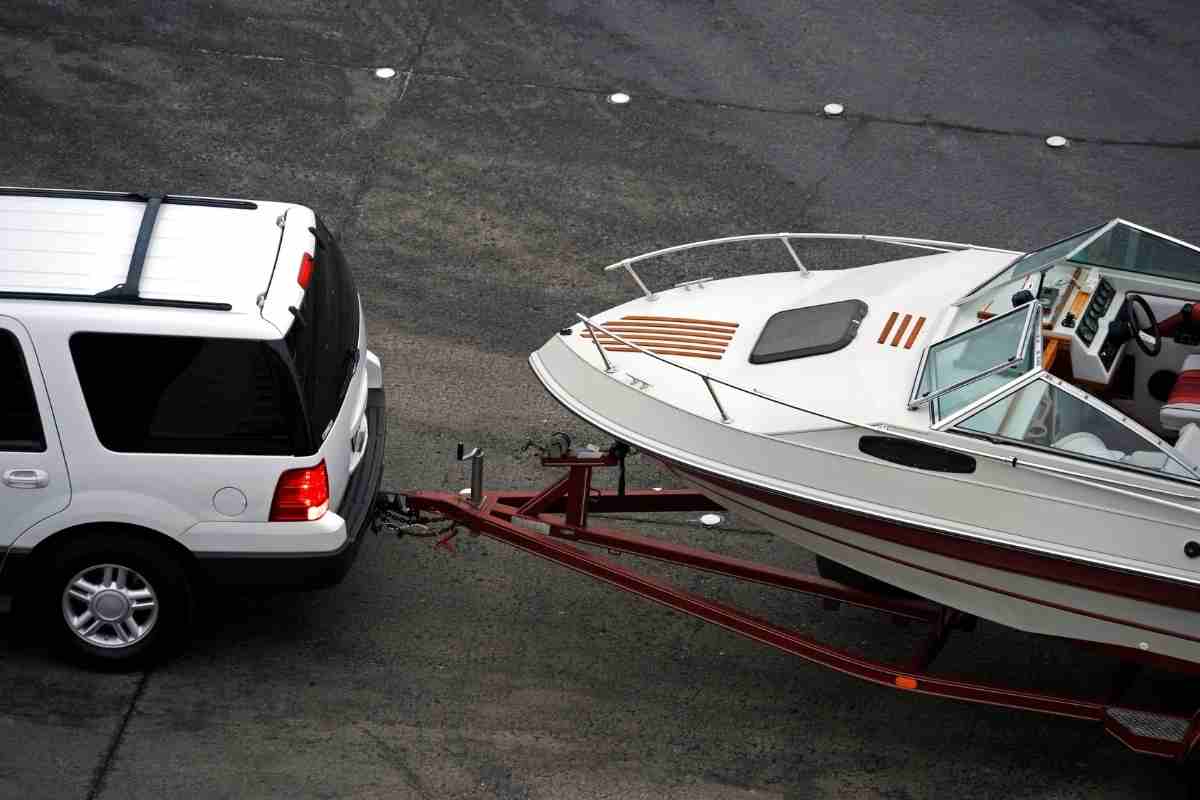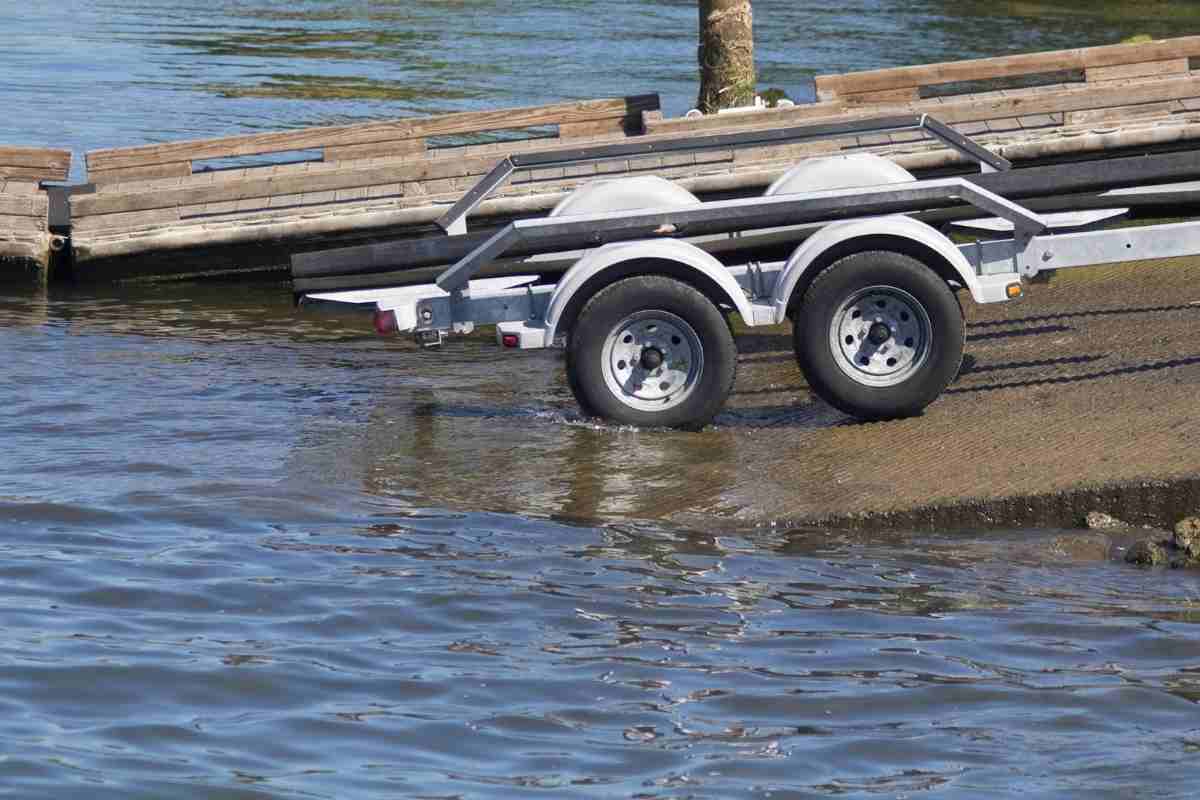Should You Use Four-Wheel Drive When Towing?
We often hear about using four-wheel drive when we’re facing challenging terrains, such as mud, snow, or steep inclines. Thanks to a higher gear ratio and traction to all four wheels, this drivetrain alternative is excellent for those situations, but you might be wondering if you should use four-wheel drive (4WD) when towing. Let’s answer this question.

Should I tow in 2wd or 4wd?
4wd does not assist with towing. As long as your vehicle is adequately prepared for towing and the load doesn’t exceed its capabilities, 2wd is sufficient for towing. You should use 4wd when you’re towing only when facing extreme conditions like mud, snow, or ice.
If you’re driving on a dry surface and have adequate traction, you shouldn’t use 4WD for towing; instead, you should use RWD.
It’s essential to understand how 4WD works so that you can see more clearly why it could be detrimental to use it when towing.
There are two main kinds of 4WD drivetrains, permanent and temporary; they differ in that a vehicle with permanent traction on all four wheels from the engine clutch. Classic examples include the original Range Rover and Land Rover Defender.
Temporary 4WD differs in the sense that only two wheels are engaged while the other two only activate when there is less traction. This activation is thanks to an electronic clutch that engages all four wheels when it senses the wheels are slipping.
But, the question can arise: should you tow a trailer in 2WD or 4WD? Well, two main reasons explain why you should prefer going for 2WD.
Why is 2wd better than 4wd for towing?
The first reason why you should use 2WD instead of 4WD is due to power. If your vehicle only engages two wheels (be it rear or front wheel drive, as with the Honda Ridgeline), the engine splits the power in two and faces less friction. When you are checking vehicle specifications, you will notice that, usually, 2WD versions tow more than their 4WD counterparts. We’ll explain this further down.
The second reason you should tow with 2WD is due to potential damage to your vehicle. 4WD aims to send power to all four wheels when there is slippage, which means that one of your wheels is crazily spinning, looking for grip, but finds none. In this case, the vehicle can move the others to find traction.
But, when you’re driving on a dry surface with proper traction, all your wheels will be spinning, and they won’t slip.
When you’re turning, one of the front wheels does so at a slower rate than the other. If you have activated your 4WD, you risk damaging gears inside your differentials by forcing them to turn at the same speed when they don’t need to.
Also, remember that some vehicles have what’s called a low-range gearing, sometimes called 4×4. This configuration sends power to all four wheels and has a different gear ratio for more torque. Thanks to this added torque, you can get out of tougher terrain. But, if you’re driving on a dry surface, you’re also adding extra strain to various components by forcing higher torque on them.
So, it might seem that there’s no need a four-wheel drive vehicle when towing. Let’s answer this question.
Is 4×4 necessary for towing?
4×4 is necessary for towing when you’re facing situations with minimal traction. Some examples might be mud, snow, ice, gravel, or very irregular terrain. If you’re on muddy grounds and you need to tow something, then you need 4×4.
But, we must make one thing clear: 4×4 won’t help with towing more pounds. If anything, it can lower the number of pounds you can pull, except for some SUVs and pickup trucks. 4×4 will help you have more traction, and therefore more chances of getting out of that challenging terrain.
It also comes in handy when you’re going either up and down an incline with less than ideal traction. In the case of a positive gradient (going uphill), 4×4 will help you have more traction to claw your way up.

4×4 is the most useful when you’re going in a negative incline with less than ideal traction. Thanks to the low-range gearing, the vehicle produces more torque and actually slows the pickups down to have more traction. This deceleration proves essential when going downhill, as it takes a lot of the load off your brakes.
If you’re going to tow something in any of these conditions, remember that 4×4 isn’t the only tool you might need. Trailer brakes are an essential addition for safe driving in extreme conditions, and you can also consider brake controllers. While some manufacturers have them, not all do, and there are plenty of aftermarket systems out there.
And this leads us to a fundamental question: can 2WD tow more than 4WD?
Can 2WD tow more than 4WD?
2WD can tow more than 4WD. In 2wd, the engine only has to send power to two wheels instead of four, allowing for more concentrated traction. It’s very common for trucks and SUVs to have a higher towing capacity in 2WD versions when compared to 4WD.
Here are some examples. The Ford Expedition is class-leading when it comes to towing ability, with an impressive 9,000 pounds, but you can only achieve this when you ask for the Heavy-Duty Trailer Tow package and RWD.
The Chevrolet Suburban can tow a very respectable 8,300 pounds with the Max Trailering Package and RWD. When you order a 4WD version, this number drops to 8,100 pounds.
But there are exceptions. For example, the Nissan Armada tops out at 8,500 pounds, thanks to its 5.6-liter V8 putting out 390 hp and 394 lb-ft of torque. Nissan promises this performance to both rear-wheel drive and four-wheel-drive models as long as customers order the Class IV trailer hitch.
Read our article on SUVs and their towing capacities if you want to learn more about what the market has to offer.
Now that we’ve seen how, in most cases, 2-wheel drive can tow more than 4WD, let’s talk about another vital aspect of towing: tow packages.
Are tow packages better with 2WD?
When you’re towing cargo, you’re putting additional strain on all of your vehicle’s components. This means that your transmission, brakes, steering, and drivetrain all feel the added pounds. Take the brakes, for example; they have to stop more pounds, especially when going down a hill.
Automatic transmissions generate more heat than manuals, and when facing extra weight, they might reach higher temperatures, increasing the wear on internal gears and seals. When we’re talking about 4WD, you have to factor in this rise in temperature in both the front and the rear wheels.
Towing packages include improved cooling for the transmission and engine, bigger brakes, and increased gear ratios for added torque, but these improvements won’t take away one crucial fact. A 4WD vehicle with the best tow package still has to split the power to all four wheels instead of two.
So, in most scenarios, the best towing combination is a factory-specification tow package with 2WD so that the most power goes only to two wheels. Of course, a trailering option can also increase your vehicle’s towing capacity if it’s 4WD, and this might be ideal for you if you’re continually facing extreme conditions like mud, loose gravel, sand, snow, or ice.
We covered tow packages in detail in this article if you want to learn more about how they can improve towing.
Towing In 4wd Or 2wd
This article aimed to answer if you should use four-wheel drive when towing. As we have explained, in most everyday situations, the ideal configuration is a 2WD vehicle with a towing package so that you can send the most power to only two wheels. You should reserve 4WD in towing for only extreme weather situations. No need to go get a new truck to tow that boat!
That’s not to say that 4WD isn’t useful for towing; it is! It comes in handy when you have to traverse muddy or snowy terrain. It also works great when you’re facing big rocks or ice. In these situations, 4WD helps you have more traction and more torque, thanks to low-range gearing, making towing safer. But, remember that 4WD doesn’t increase your towing capacity.
We mentioned that there is a situation in particular that does require 4-wheel drive. One of the most practical uses you can have for 4WD, especially when you have low-range gearing, is when you’re towing downhill. Due to the incline and added weight of the payload, your brakes work extra.
Thanks to the added torque and reduced speed coming from the 4×4, you can take some of the load off the brakes and avoid overheating them, giving you more control, especially when you have a trailer.
We also explained how most vehicles have more towing capabilities in their 2WD versions than their 4WD due to power going to two wheels instead of four. While this sounds logical, the difference can be considerable in some examples we mentioned above.
So, 4WD is excellent to have if you face severe weather frequently or go off-roading. It’s a perfect tool for improved traction and more control. But, it might not be ideal for towing. So, now you know in which situations you should use four-wheel drive for towing and in which you’re better off with two-wheel drive.
